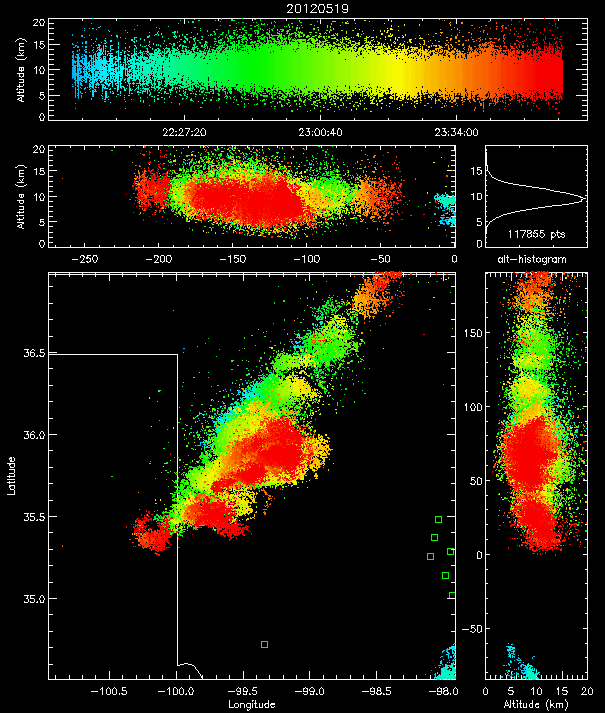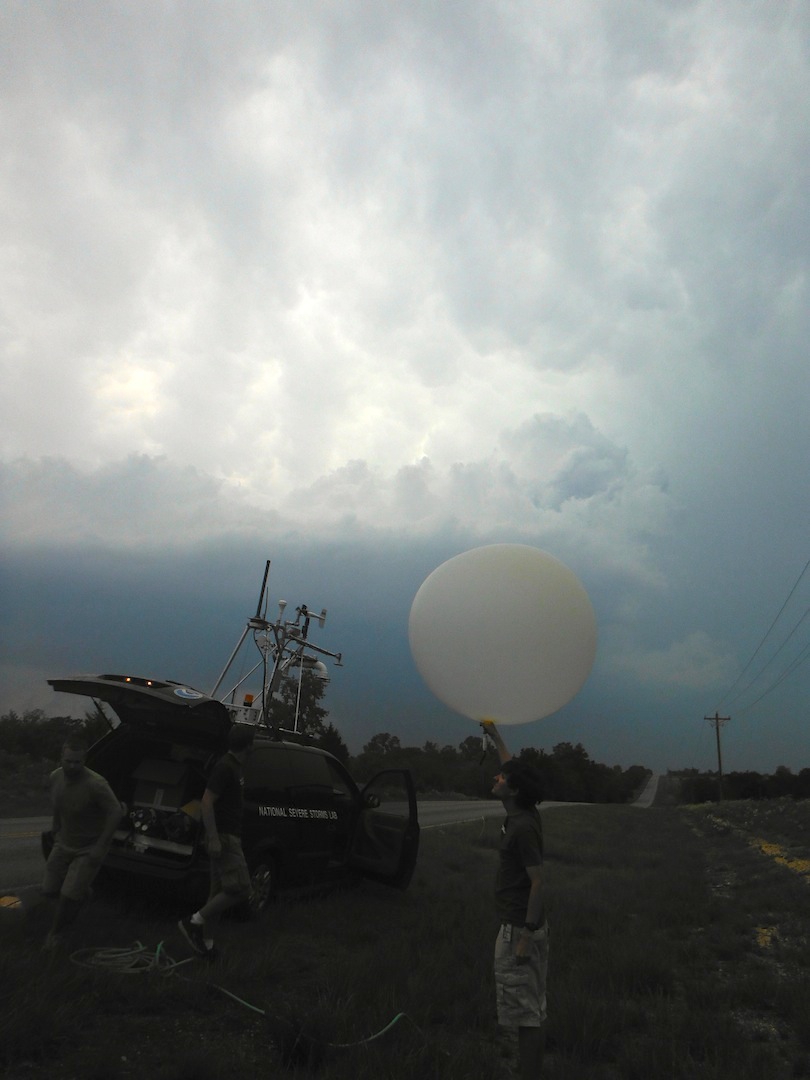More than 100 researchers from NOAA and 29 other organizations are collaborating on a field project this spring to discover how thunderstorms act like elevators, taking pollution and water-rich air from the surface and lofting it straight up into the upper troposphere.
The Deep Convective Clouds and Chemistry (DC3) experiment will explore the role of the displaced air in forming upper-atmosphere ozone, a greenhouse gas. Measurements made using three research aircraft, mobile radars, lightning mapping arrays, and other tools will help scientists understand more about the electrical and chemical structure of thunderstorms, including the concentration of ozone.
Ozone is created when sunlight triggers interactions between pollutants such as nitrogen oxides and other gases. These interactions are well understood at the Earth’s surface, but they have not been measured at the top of the troposphere, where the effects of ozone are the strongest.
Pollution isn’t the only source of nitrogen oxides, however.
“We are pretty sure lightning is the largest natural source of nitric oxide,” said NOAA National Severe Storms Laboratory scientist Don MacGorman. “It is important to know the naturally occurring contribution.”
While past field projects have focused on the thunderstorm details with only some chemistry information or on the chemistry with limited data on the storms, DC3 is the first to take a comprehensive look at the chemistry and thunderstorm details, including the air movement, cloud physics, and electrical activity. Investigators expect the data to create the best picture yet of chemical transport, production and processing by thunderstorms.
The DC3 project runs from May 15 – June 30, and is funded by the National Science Foundation, National Oceanic and Atmospheric Administration and NASA.
DC3 investigators will collect data in northern Alabama, northeastern Colorado, and central Oklahoma. All three sites have existing weather instrumentation on the ground, including dual-Doppler research radars and lightning mapping arrays enabling the scientists to study different types of atmospheric environments and storm types.
Teams from the NOAA National Severe Storms Laboratory and The University of Oklahoma will launch balloon-borne instruments to make measurements of the storms and of the storm environment. These measurements will be combined with observations from aircraft and with information about the location, size, and frequency of lightning from lightning mapping arrays. Such measurements, MacGorman said, will improve understanding of how storms produce lightning and help with the use of lightning mapping data to improve storm forecasts and warnings.
NSSL and OU will also operate mobile Doppler radars to help researchers observe the internal airflow patterns of storms, which are important for determining how much air is transported up through the storm. Radars with dual polarization technology will provide additional information on particle shapes, for example where large raindrops occur.
NOAA Earth System Research Laboratory’s (ESRL) Owen Cooper and Jerome Brioude will use weather forecasting models to understand where the air lofted into the troposphere by a thunderstorm travels. A day later, one of the research airplanes will target that region, so the scientists can look at how the air mass composition changed: how much ozone formed, for example, and whether chemical reactions created particulate matter , too.
“Usually, things just simmer along slowly in the upper troposphere,” said ESRL’s Tom Ryerson. “These storms have the potential to crank up reaction rates to more of a boil.”
Three research aircraft will be based at Salina (Kan.) Municipal Airport, a location more central to the study areas. Each day, they will fly to the area with the most promising forecast for thunderstorms suitable for study.
The NSF/NCAR Gulfstream V research aircraft will do the bulk of the high-altitude measurements. Simultaneously, a NASA DC-8 will fly as low as 1,000 feet above the ground, measuring air flowing into the clouds at their base as well as the chemistry of surrounding air. The third research aircraft, a Dassault Falcon 20E operated by DLR, the German space agency, will join DC3 for three weeks and fly especially close to storm cores at high altitudes.
The scientists leading the project are from the National Centers for Atmospheric Research, the Pennsylvania State University, Colorado State University and NOAA.
MORE INFORMATION:
DC3: https://www2.acd.ucar.edu/dc3
NOAA National Severe Storms Laboratory: http://www.nssl.noaa.gov
NOAA Earth Systems Research Laboratory: http://www.esrl.noaa.gov




